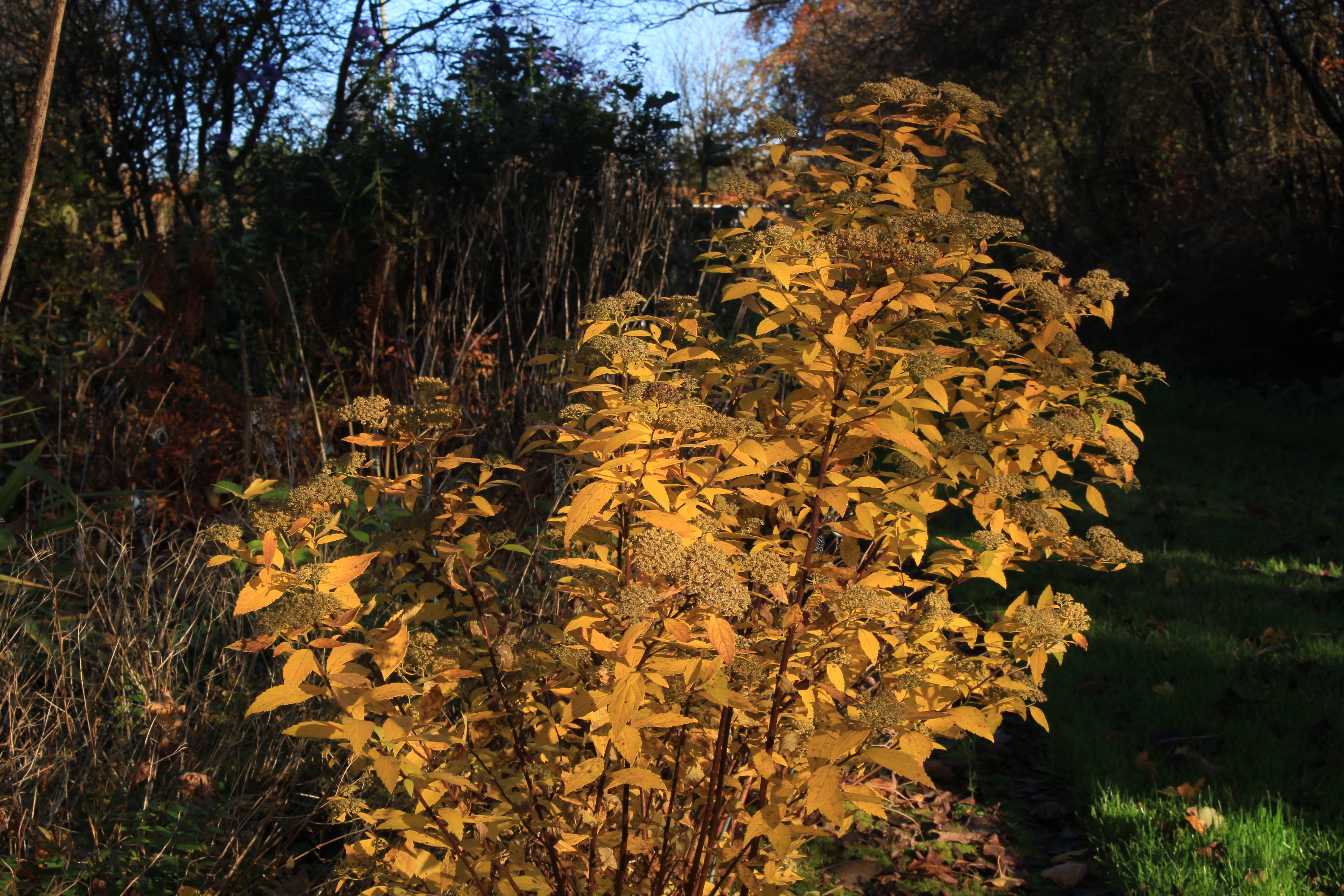Spiraea japonica 'White Gold'
Approx. 0.5 litre pot
About this cultivar:
Spiraea japonica 'White Gold' is a shrub with yellow leaves and white flowers. Breeding first began in 1993 in Hampshire when the Peter Catt of Liss Forrest crossed the female parent Spirea japonica var. albiflora with the male parent Spirea japonica ‘Candlelight’. The resultant seedlings flowered in 1994 and because none of the yellow-leaved seedlings exhibited white flowers, a yellow seedling was selected and used as the female parent and crossed with the male parent Spirea japonica var. albiflora. As a result of this cross several seedlings were produced which had yellow leaves and white flowers. When these seedlings were developed and flowering freely, a final selection was made, and voila, 'White Gold' was struck.
Its young yellow foliage turns green as it ages before turning a glorious gold in the autumn. Clusters of white flowers are borne in large flower heads in the summer. Has the RHS AGM, most likely because of the unusual colour combo, its long flowering nature, and neat compact habit. Can scorch tho, so watch out if very sunny.
- Position: Full sun, partial shade
- Soil: Almost any soil - Grows well in Ballyrobert
-
Flowers: June, July, August, September
- Other features: Royal Horticultural Society Award of Garden Merit (RHS AGM), Bees, Butterflies, and Bugs
- Hardiness: Fully Hardy, Grows well in Ballyrobert, H6 - Hardy in all of UK and northern Europe (-20 to -15°C)
- Habit: Bushy
- Foliage: Deciduous
- Height: 60 to 75 cm (2 - 2.5 ft)
- Spread: 60 to 75 cm (2 - 2.5 ft)
- Time to full growth: 5 to 10 years
- Plant type: Herbaceous Perennial, Shrub
- Colour: White, yellow
- Goes well with: Wall, Fence, hedge
About this genus:
Spiraea is a genus of about 80 to 100 species of shrubs in the Rose family (Rosaceae). They are native to the temperate Northern Hemisphere, with the greatest diversity in eastern Asia. The genus formerly included the herbaceous species now segregated into the genera Filipendula and Aruncus; recent genetic evidence has shown that Filipendula is only distantly related to Spiraea, belonging in the subfamily Rosoideae. The genus name comes from the Greek word speira meaning wreath in reference to the showy flower clusters seen on most plants in the genus.
Spiraea plants are hardy, deciduous-leaved shrubs. The leaves are simple and usually short stalked, and are arranged in a spiralling, alternate fashion. The many small flowers of Spiraea shrubs are clustered together in inflorescences, usually in dense panicles, umbrella-like corymbs, or grape-like clusters. These showy clusters of dense flowers make them great for gardens! Some species bloom in the spring, others in midsummer, so do check.
In the garden they will grow anywhere that isn’t too extreme so are always worth a try. Usually grown as stand alones shrubs, some people also grow then as, and into, hedges.
Interestingly, acetylsalicylic acid was first isolated from Filipendula ulmaria, a species at the time classified in the genus Spiraea. The word "aspirin" was coined by adding a- (for acetylation) to spirin, from the German Spirsäure, a reference to Spiraea.
Native American groups seemed to know this – many had various medicinal uses for local Spiraea species. S. betulifolia was used for abdominal pain and made into a tea. The Blackfoot used S. splendens root in an enema and to treat venereal conditions. Many Native Americans found S. douglasii useful for making brooms and hanging seafood to cook as well! Hopefully the beautiful look of these plants is enough to keep you happy and pain-free!










